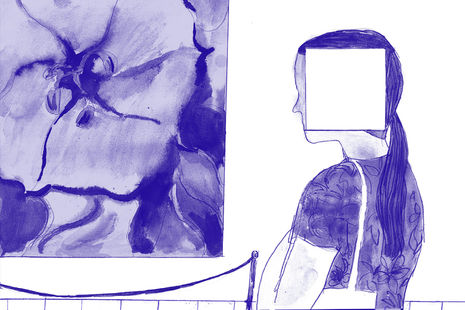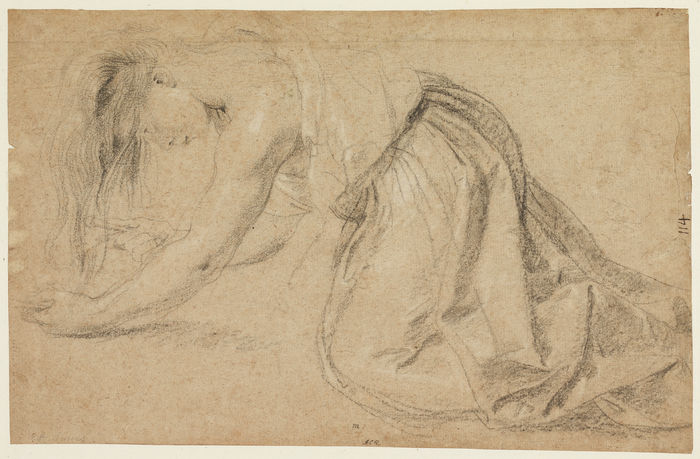Feeling stupid in art galleries
From the Fitz to Kettle’s Yard, Ben Birch questions museum labels, and being told what to think

I feel very stupid when I walk around the Fitzwilliam Museum. In March of this year, the museum refurbished its permanent collection. The works are no longer displayed beside their contemporaries or counterparts. Instead, they are placed next to artists and works who may be at the other pole of the history of art. The Old Masters take their place alongside the artists of today. Movements, artists, and eras are no longer categorised, but rather diffused. In these exhibitions, you are confronted by the whole of art’s history simultaneously – opposing philosophies and politics of art are separated by less than a metre. While this curation style can produce new perspectives and responses, there is a lot going on at once. I feel that I am not open enough for it. I am not open enough because I don’t feel clever enough for it.
“I assumed that I was wrong and that my dislike of it had been educated away”
Appended to each artwork is a museum label. In a place like the Fitzwilliam, these labels are essential. The experience of the gallery is an intimidating one and the purpose of these labels is to make us feel less stupid – they tell the story of the art to us. Often, we come to a gallery from a position of ignorance and hope to leave it in a somewhat more enlightened state. The experience of the artwork alongside the storytelling of the museum label is how we experience art today. In my experience, the first hour of a gallery visit is spent devotedly reading these labels and regurgitating the stories they tell in order to impress friends and romantic interests. (I personally know of two unrelated people who memorised museum guides in order to impress their dates.) After this hour has elapsed, most cognitive abilities are lost – print becomes blurred, speech becomes incoherent, and the suffering visitor is rushed to the museum’s café to be extorted.
In this state, I find myself to be very vapid. Pale and feverish, I brushed by a painting called ‘Weddell’ by Gillian Ayres, unimpressed. Recently, I’ve noticed that my reflex reaction after not liking a work of art is to turn to the museum label – I don’t want to be caught out. My assumption is that if a work is historically important or a cultural colossus, as per the museum label, then my distaste for it must be wrong. Knowing I did not like the artwork, I turned to the label: ‘The title of the work may refer to the Weddell Sea in the Antarctic. However, the painting generally evokes nature’s power and vastness rather than depicting a place.’ I squinted again at the painting so that I could spot nature’s power and vastness. I shrugged and supposed I could. My experience of Ayres’ painting had been reshaped by the label. I assumed that I was wrong and that my dislike of it had been educated away.
“Museum labels are like people who have nothing but pleasant things to say about others – they are liars”
A joke is not funny when it is explained – I think the same principle should apply to art. In galleries, I know so little about what I am experiencing that I can allow my instincts to be recomposed by these labels. Their authority can encourage a fixed experience of art or a single interpretation. Museum labels are like people who have nothing but pleasant things to say about others – they are liars. These labels encourage a culture of praise. They are never critical, negative, or sceptical; they buy into the works that they describe; they drink the Kool-Aid. Once we’ve had it explained to us, a personal aversion to a piece of art now seems more a matter of ignorance than preference. Many museum labels seem to have taken on the role of salesperson. The difference between art gallery and showroom becomes less and less distinct.
Kettle’s Yard offers an escape from this phenomenon. While there are books in each room which identify the artworks, there are no museum labels in the house. The obvious reason for this is that it is not a museum – it’s a house. Jim Ede’s collection was his home, and it is supposed to be lived alongside. In a place like Kettle’s Yard, it is easier to understand what it means to experience art rather than consume it. There are no pre-existing narratives in this gallery – only collection and curation. Museum labels have the habit of turning art into artefact and spectator into consumer. But in the Ede home, the clamour of the art world and its labels is shut out. We are left with a simpler experience between the art and the viewer. There is no denying that these labels are helpful and important. But it is equally important to recognise the culture that they create. They can hem us in and diminish the importance of personal response. You are not in the wrong for not liking Hals or Gainsborough, no matter how hard the labels sell their work. The gallery should be a space for personal reaction and contemplation, not a showroom.
 News / Cambridge study finds students learn better with notes than AI13 December 2025
News / Cambridge study finds students learn better with notes than AI13 December 2025 News / Cambridge Vet School gets lifeline year to stay accredited28 November 2025
News / Cambridge Vet School gets lifeline year to stay accredited28 November 2025 Science / Did your ex trip on King’s Parade? The science behind the ‘ick’12 December 2025
Science / Did your ex trip on King’s Parade? The science behind the ‘ick’12 December 2025 News / Uni Scout and Guide Club affirms trans inclusion 12 December 2025
News / Uni Scout and Guide Club affirms trans inclusion 12 December 2025 Arts / Modern Modernist Centenary: T. S. Eliot13 December 2025
Arts / Modern Modernist Centenary: T. S. Eliot13 December 2025








